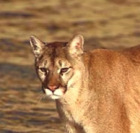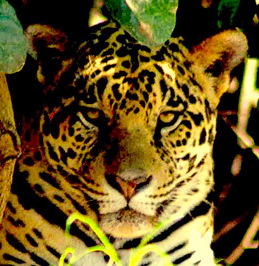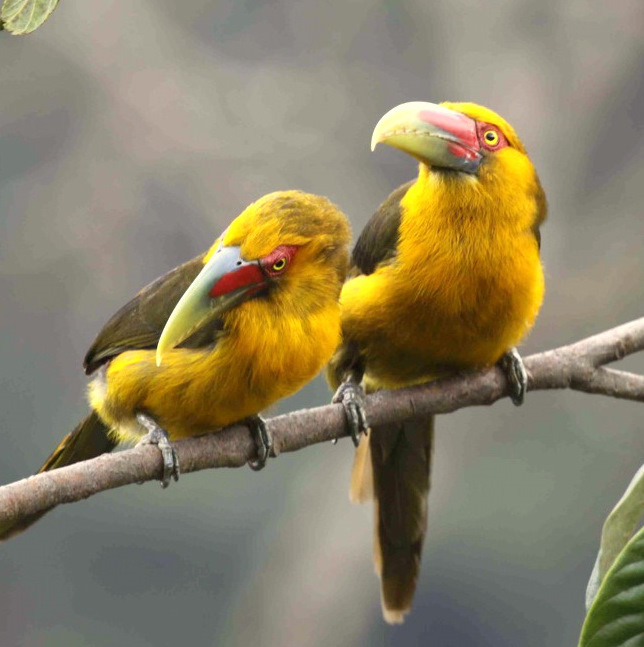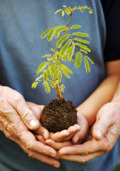COCHABAMBA TO VILLA TUNARI: High Altitude Puna to Lowland Amazon
From the delightful city of Cochabamba at 8,400 feet we begin on the Villa Tunari road, known to be one of the best birding sites in South America. It is also a botanist's dream as the road climbs to the Puna ridge at 12,000 feet before dropping back down to elfin forest, cloud forest and then rich montane temperate forest.
In this region one can find the endemic Black-winged Parrot, Amethyst-throated Sunangel, Great Sapphirewing, Black-hooded Sunbeam, the fabulous Golden-headed and Crested Quetzals, White-throated Quail-Dove, Hooded Mountain-Toucan, Blue-banded Toucanet, Crimson-mantled Woodpecker, Chestnut-crested Cotinga, the endemic Black-throated Thistletail, Rufous Antpitta, Andean Tapaculo, Rufous-breasted and Brown-backed Chat-tyrants, Scarlet-bellied Mountain-Tanager, Blue-and-Black Tanager, and White-browed Conebill.
The road continues on down the road to a place that we regularly have lunch in the upper subtropical rainforest at around 5,000 feet. The forest here is humid with many epiphytes and reminiscent of the Atlantic coastal rainforests of Brazil. At this altitude, the forest is rich in little known species. Possibilities include the Brown Tinamou, Andean and Sickle-winged Guans, Plumbeous Pigeon, a showy race of the Collared Inca with a chestnut collar, Long-tailed Sylph, Booted Rackettail, Masked Trogon, the gaudy Versicolored Barbet, Montane Foliage-gleaner, Red-necked Woodpecker, Olive- backed Woodcreeper, the shy White-throated Antpitta, Blue-backed Manakin, Ochre-faced Tody-Flycatcher, the scarce and endemic Yungas Tody-Tyrant, White-eared Solitaire, Spotted Nightingale-Thrush, Saffron-cowled, Slaty, Straw-backed and Spotted Tanagers, Deep-blue Flower-Piercer and many others. Further down the road, approaching Amazonian rainforest, one can see the Andean Cock-of-the-Rock, a large, orange/red bird with black wings and tail, white patches on the wing and an almost comical plumage on its forehead resembling an orange slice.
We finally descend into the tropical lowlands and the resort town of Villa Tunari as the end of an exhilarating day. We will have dropped some 10,500 feet from the pass this morning. At the foot of the Andes, 1,475 feet above sea level, Villa Tunari is in one of the wettest areas of sub-tropical forest on the continent. Based in Villa Tunari, birders will want to look for a number of Amazonian species.
Occurring here are the Amazonian Umbrellabird, Black-throated Antbird, Black-spotted Barbet, Black Phoebe, Swainsonís Thrush, Red-crowned Ant-Tanager, Crested and Dusky-green Oropendolas, Golden-crowned Flycatcher, Andean Cock-of-the-Rock, Black-and-chestnut Eagle and the restricted Upland Antshrike.
The nearby Carrasco National Park is reached by a cable ride across a raging river. One at a time we will be whisked across the river in a safe but exciting ride. The river crossing is an adventure in itself, but our goal here is a cave with the southernmost population of Oilbirds. In a safe procedure a single seat is pulled across a cable over the rushing river below. Somewhere in these habitats lurks the rare Spectacled Bear. Reaching 200kg, the bear is omnivorous and inhabits the forest floor, trees and the unlucky farmer's corn field. Its black or brown body has white circles around the eyes, giving it its name.
We recommend 4 or 5 days to fully explore the Villa Tunari road, which may be the highlight of any Bolivia tour.









